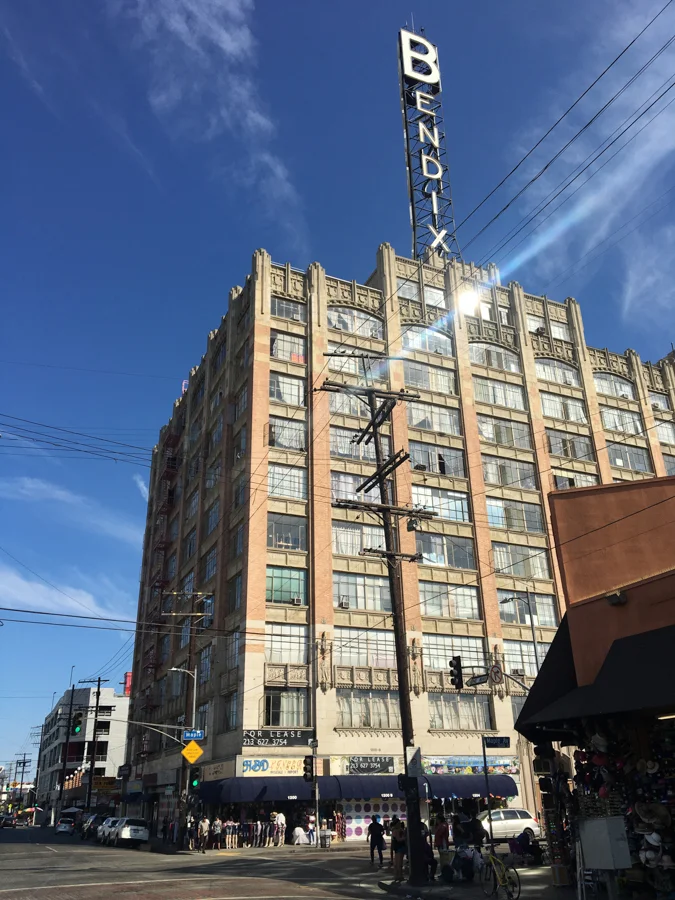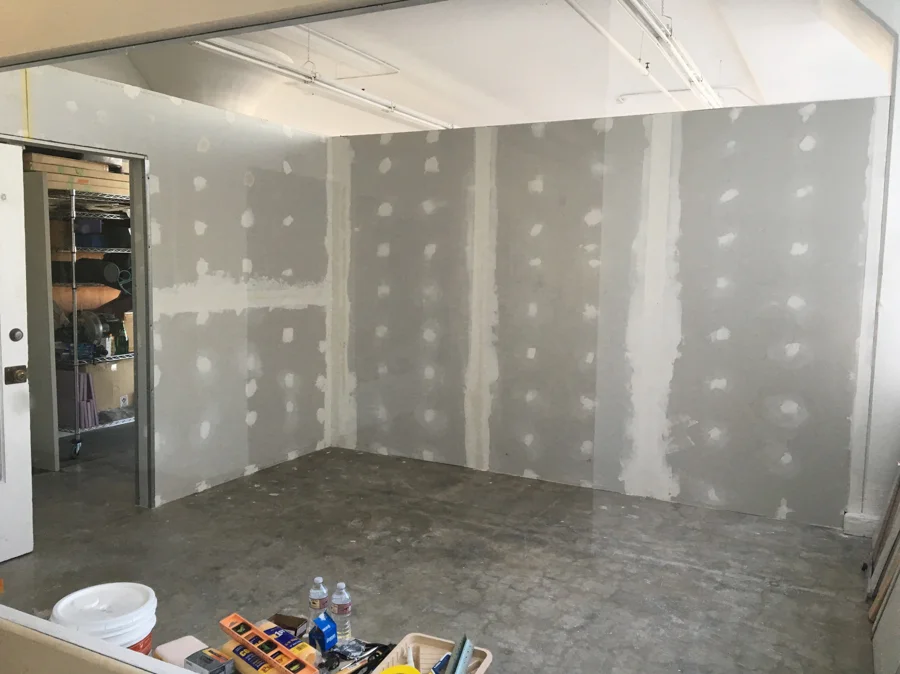A-B Projects
A-B projects is a space for the exhibition of work by artists who are expanding and redefining the field of ceramics. Owner and Director Nicole Seisler has curated twenty exhibitions at A-B Projects over the last three years, and she recently relocated the gallery to the Bendix Building in downtown Los Angeles.
A-B Projects
1206 Maple Avenue, #540
Los Angeles, CA 90015
www.a-bprojects.com
@nicole_seisler
Interview with Nicole Seisler of A-B Projects
Hi Nicole! Can you give us the story about A-B Projects and how it began?
When I moved from Seattle to Los Angeles in 2015 I knew that I was going to open a gallery in conjunction with my position as Lincoln Visiting Professor of Ceramics at Scripps College. The school had offered me a space on campus that I could use as a studio, but since I already had a studio in downtown Los Angeles, I came up with a different scheme for this free real estate. I wanted to expand my own community, invite critical thinkers to have solo exhibitions and to be visiting artists at Scripps, and augment the new courses I was developing by bringing contemporary ceramics directly to campus. On the drive down the coast from Seattle, my beloved 25-year-old Toyota Corolla Deluxe experienced brake failure and had to be left behind in Oregon. That’s when I decided the gallery’s namesake—my old car August Beater, or A-B.
You are currently into a new space in downtown LA. Congrats! What prompted the move?
The new space is extremely exciting! a-b Projects was previously located in Claremont, which is 35 miles east of Los Angeles, so the new location significantly increases accessibility. My visiting position at Scripps College had a limited duration of three years, so I always knew that I would eventually need to decide if A-B was a finite three-year project or if it would have a continued future. Over those initial three years I curated twenty exhibitions at A-B Projects and ultimately, I wanted to capitalize on this momentum and continue contributing to the much-needed critical dialogue in contemporary ceramics. This past August I launched a Kickstarter campaign, in which I sold functional ceramics to fund the relocation of this space for conceptual ceramics.
What will be different about the new space?
The new space is located in the Bendix Building alongside several other galleries and a few dozen artist studios, including my own. I decided to dedicate 150 square feet of my space to A-B Projects because it is such a significant part of my practice. In October, a handful of generous and steadfast friends helped me construct walls in the front of the space. There is a huge plate glass window through which exhibitions will be viewed—it elicits a stage-like or diorama quality that I am encouraging exhibiting artists to specifically respond to with their installations. The galleries TSA LA, Monte Vista Projects, post, and Track 16 are my amazing neighbors with whom I will collaborate to pair openings and events. There is no true gallery ‘center’ in Los Angeles but the Bendix is quickly becoming a hub with a line of visitors extending out of the building on opening nights.
What goals do you have for the new space?
The goals in the new space are aligned with the ongoing mission of A-B Projects, which is to be a platform that shifts the perception and role of ceramics from a specialized but marginalized craft to a more pluralistic field within the greater realm of contemporary art. The ancillary mission of A-B Projects is to use clay as a conduit to connect and support community. I love working one-on-one with artists to develop their shows, to encourage risk-taking, and to challenge the ways in which we define ceramics. In the new space, there will be increased visibility and the opportunity to form even broader community. It’s an exciting time because there are myriad unknown possibilities that will present themselves under these new circumstances.
A-B Projects focuses on showing work by artists who are expanding and redefining the field of ceramics. What do you look for in work that pushes the boundaries of ceramics?
I look for work that uses ceramic history and traditions to bolster experimentation, critical commentary, and the metaphoric capabilities of materiality. I believe that the most challenging and effective contemporary ceramic work fits into conceptual, relational, and new materialist frameworks.
What are some of the most unique aspects of being based in Los Angeles?
Los Angeles is a beautiful beast and I feel so fortunate to have landed here. The stereotype of LA is that the city and its people are superficial and overly concerned with appearances. In fact, I have found it to be the opposite: people are genuinely interested in each other’s endeavors and nobody really cares what appearance you choose—you can change from day to day or month to month and you won’t be judged for it. There is a real sense of community and support in LA’s creative industry; artists, designers, chefs, local farms, yoga instructors, small business owners, etc. have overlapping networks and overtly collaborate on products, events and ideas. There is always something new and innovative being generated in this city. Plus, the weather, the light, the beaches, the mountains, the desert…there are a lot of unique and amazing things about LA.
Can you talk a bit about the ceramics scene in Los Angeles right now? How has it changed since the gallery had its first show in 2015?
There is an incredibly rich legacy of ceramics in Los Angeles but it has been historically dominated by men. More recently there is increased visibility and influence of women across the field, from exhibiting artists and university faculty members to arts writers and gallery owners. A few individuals who come to mind are Anna Delgado, Brittany Mojo, Alison Petty Ragguette, Catherine Fairbanks, Kristen Morgin, Julia Haft-Candell, Candice Lin, Kenna Dworsky, Jackie Rines, Julie Schustack, Leah Ollman, Alison Limtavemongkol, Rebekah Myers, Amy Santoferraro, Anna Mayer, Liz Glynn, and Lauren Bon. This shift is significant and necessary.
Can you talk a bit about the role of artist-run spaces today, specifically as they relate to ceramics?
In ceramics there are commercial and non-commercial artist-run spaces. I believe the most successful spaces—in terms of amplifying criticality in the field of ceramics—reside in one or the other of these camps. Commercial, artist-run spaces specialize in functional ceramics and work that is best categorized as design. Non-commercial, artist-run spaces don’t have to respond to market expectations; we make our own rules, we operate like miniature experimental museums (with our own miniature budgets…but let’s not go there). For ceramics, this is an opportunity to showcase the seemingly impossible, the daring, and the weird. It is an opportunity to stretch conventions.
At A-B Projects, past exhibitions have included elements such as thirty vertical feet of clay from Chicago, humorous and imperfect duplicates of a ceramic sculpture that is missing from a museum collection, and holographic projections with clay-pigmented fabric. I have also exhibited photography, which despite its significantly younger history, shares many developments and hurdles in common with ceramics, and presents a relationship to contemporary ceramics that warrants deeper investigation.
When did curating become part of your repertoire? What drew you to starting a gallery, and what keeps you invested in curating shows?
I started curating shows when I was an undergrad at the School of the Museum of Fine Arts in Boston (SMFA, where I co-founded a student organization called InfraSculpture. We curated shows including Mud People Unite and The Flattening; we successfully petitioned the MFA Boston to regularly invite SMFA students to curate exhibitions in a widely visited space adjacent to the museum cafeteria; and I organized seasonal sculpture events such as Chisels and Chainsaws, an ice carving competition that eventually became an annual city-wide event. I continued curating small exhibitions until I became a graduate student at the School of the Art Institute of Chicago (SAIC). After earning my MFA I worked in the administration at SAIC for a couple of years; I opened The Office Gallery in my tiny and otherwise relatively boring office, and held exhibition openings in the hallway. Curatorial projects have long been a way for me to build community and to engage in critical dialogue. A-B Projects is a natural extension of my practice as a teacher and a maker. It takes a lot of time and energy to run this space, but I think of it as yet another participatory project in my practice, and I believe that a-b Projects makes a vital contribution to the continued evolution of the field of ceramics.
You are a working artist in addition to running the gallery. How do the daily operations of the gallery relate to your studio practice?
My practice as an artist is comprised of being a maker, an educator, and a curator. Each of these areas inform each other and are linked together—physically and conceptually—by the materiality of clay. Now more than ever the daily operations of the gallery are entwined with my studio practice because A-B Projects is located in my studio. There are a lot of things to be gained from this proximity but I have also purposefully designed as much separation as possible between the gallery and my workspace. Finding balance between the facets of my practice is a constant endeavor and I try to be patient when one area requires more attention than another. Ultimately, the cross pollination of my practice means that my ideas take shape in multiple formats.
How do you discover artists that you are interested in showing? Is social media something that supports this cause?
One of the most exciting things about running a gallery is that it gives me the opportunity to request studio visits with strangers. For some reason, it can feel awkward for an artist to randomly approach another artist whose work is interesting to them and ask for a studio visit (that should probably be more commonplace—it’s an excellent way for artists to get to know each other and to quickly understand new depths about each other’s practices), but being a curator necessitates these interactions. I have shown work by artists whom I have long admired but had never met, artists who I met at openings or gatherings, close friends, friends of friends, and distant acquaintances. I ask my immediate and extended community for recommendations and insights, and yes, I frequently follow artists on Instagram, which is quite a useful resource. I enjoy when artists post glimpses of their studios, work in progress, exhibitions, etc. It can be great way to gain insight into someone’s practice and remain updated through these visuals, although I’m less likely to follow an artist on Instagram if I don’t know them and they post a lot of personal content in addition to their art practice—that starts to feel oddly invasive.
What’s up next for you and the gallery?
There is a housewarming party for a-b Projects on December 9th in conjunction with the opening of plot lines, a group exhibition about how we seek, locate, and manifest a sense of home within and around ourselves. The show runs through January 20th and includes powerful domestic objects by ceramic sculptor Jackie Rines, paintings of windows and hyper compressed spaces by Christine Han, and short stories that use time and fiction to deal with personal experiences by writer Andy Anderegg. There is a lineup of solo exhibitions for 2019 beginning with Linda Swanson in February. I am also excited to have my own work featured in the upcoming NCECA annual exhibition in Minneapolis and I’m gearing up for a residency at Ash Street Project in Portland in the Spring.
To find out more about A-B Projects, check out their website or on Instagram!








